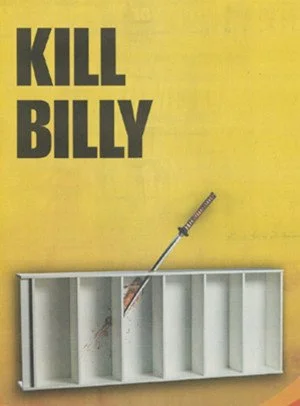The Dark Side of Mass-Produced Furniture: A Reality Check for Australia
In the land Down Under, the influence of fast fashion isn't just confined to whats inside the wardrobe—its also in the wardrobe itself!
In fact, it's infiltrated all of our living spaces through the furniture market. Dive into any interior design magazine, and you're hit with the latest trends, often fueled by businesses relying on mass production. Some paint manufacturers even have the audacity to declare their "colours of the year."
But what happens to this furniture after a few years when its no longer en vogue, starting to show signs of wear or developed that familiar wobble after you moved it to vacuum? Its rarely cost effective and often impossible to repair and lets be honest, none of us have the time or inclination these days to embark upon upcycling projects of items which have next to no inherent value just for the sake of it when its so easy replace it.
Here in Brisbane over the last few weeks the council have been rolling out the anual Kerbside Collection initiative, we have been dragging all our large household items out onto the nature strips for the council to come and collect “for free”. I have seen countless beds, and mattresses, dozens of sofas, dining tables and wardrobes wilting in heavy rain at the side of the road (dont even get me started on plastic garden toys). During previous years I have embraced this ritual - happily leaving out numerous large unwanted items which i niaively assumed would be taken by the guys from the council on their big truck to be sorted at our household waste recycling centres (as I suspect most people do). This year however, I found out wiht some horror that every single item that is left at the side of the road is taken straight to landfill with absolutely no chance of being recycled or reused. I’m therefore making the commitment to being much more mindful about not only disposing of but also obtaining… well, stuff.
As we grapple with the consequences of our consumer-driven culture, it's time to face the music and acknowledge the harsh environmental challenges confronting the Australian furniture landscape, think outside the box and accept that there is a much, much better way!
The Global Influence on Australia
While the world nods to the rise of eco-conscious initiatives, Australia wrestles with the extensive ecological impacts of mass-produced furniture. The prevalence of ‘disposable’ furniture is glaring, especially in our major cities. According to the Australian Bureau of Statistics (ABS), the percentage of household waste in each capital city attributed to furniture is mind-boggling:
Melbourne: 14% of household waste
Sydney: 12% of household waste
Brisbane: 16% of household waste
Canberra: 10% of household waste
Adelaide: 15% of household waste
Perth: 13% of household waste
Now, let's break it down in terms we can all relate to:
Melbourne: 80,000 tonnes (equivalent to 160 Million Large Watermelons)
Sydney: 100,000 tonnes (equivalent to 2,500 Sydney Harbour ferries)
Brisbane: 60,000 tonnes (equivalent to 1,000 fully-loaded Boeing 737 passenger planes)
Canberra: 15,000 tonnes (equivalent to 375 humpback whales)
Adelaide: 35,000 tonnes (equivalent to 40 Olympic swimming pools)
Perth: 45,000 tonnes (equivalent to 1200 fully loaded semi trucks)
And if you're feeling a pang of Aussie guilt, take solace in knowing we're not the worst offenders. The U.S. tosses out more than 12 MILLION TONNES of furniture annually, and those tiny islands that I once called home - the UK discard about 670,000 tonnes each year.
Buy Once, Cry Once, and Make a Difference
In a world drowning in disposability, let's shift our priorities. Opting for timeless, heirloom-quality furniture is more than a personal choice; it's an environmental commitment. Responsibly sourced timber becomes a superhero, locking away carbon when preserved in durable furniture. So, let's choose wisely, buy once, cry once, and pave the way for a future where our impact is measured by cherished legacies, not heaps of discarded pieces.
Sources: Australian Bureau of Statistics (ABS), Waste Composition and Generation Survey 2020.

